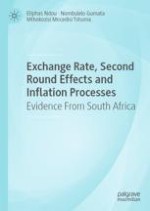2019 | OriginalPaper | Chapter
2. Policy Implications of ERPT and Ongoing Debates
Authors : Dr. Eliphas Ndou, Nombulelo Gumata, Dr. Mthokozisi Mncedisi Tshuma
Published in: Exchange Rate, Second Round Effects and Inflation Processes
Publisher: Springer International Publishing
Activate our intelligent search to find suitable subject content or patents.
Select sections of text to find matching patents with Artificial Intelligence. powered by
Select sections of text to find additional relevant content using AI-assisted search. powered by
